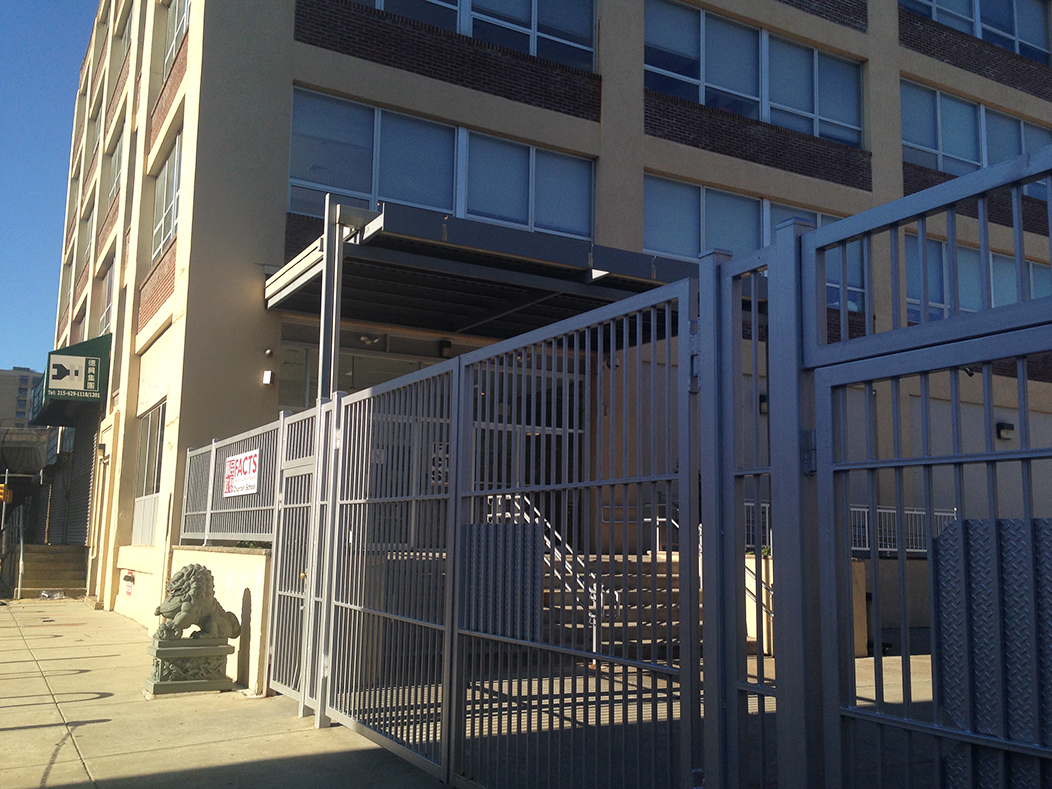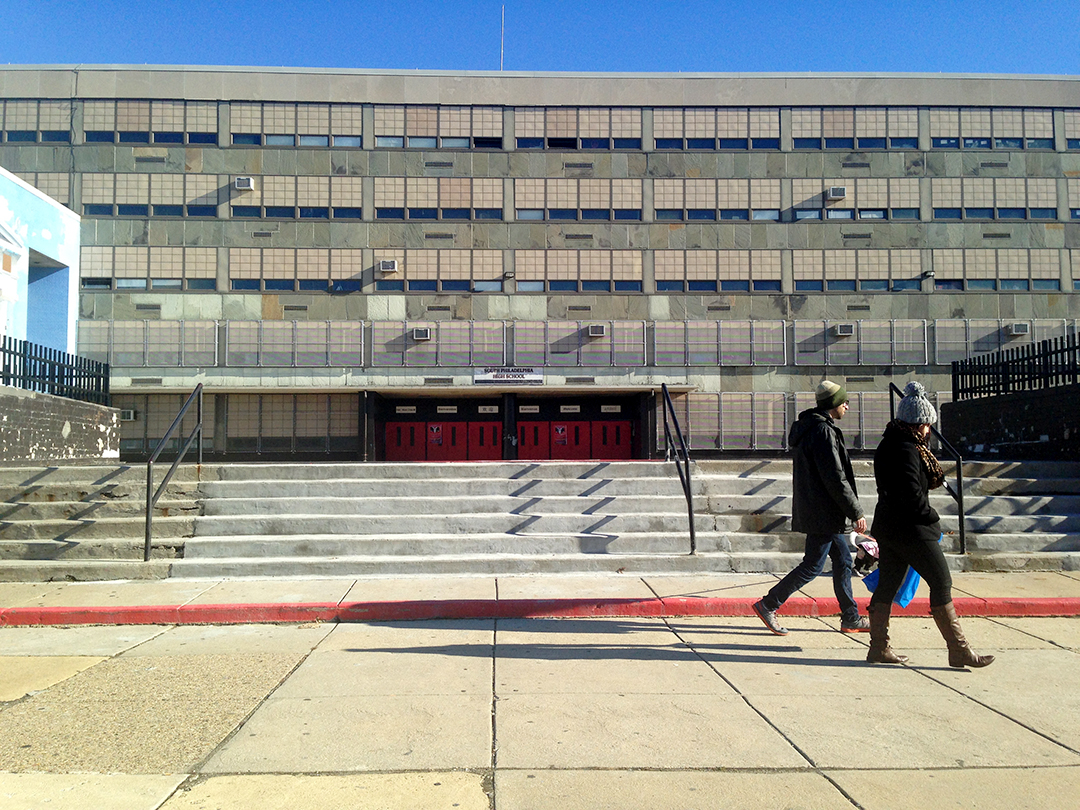
For five years, Trang Dang has been labeled a victim.
“For me, the definition is very hazy,” she said. “But people have always identified me as a victim of violence, so I was like, ‘OK, I guess I was one.’”
On Dec. 3, 2009, the day that a wave of anti-Asian racial violence burst through South Philadelphia High School, Trang was with two of her friends and her sister – all Vietnamese immigrants. They couldn’t speak English and they only ever talked to their fellow immigrant students in ESL class, secluded from the rest of the school. As fights broke out targeting Asian students in the school, administrators told Trang and her friends they had to leave immediately. They fled school only to face a ring of students waiting to ambush the Asian students as soon as they left.
A group of kids chased Trang and her friends as they tried to run home. The kids caught up to them two blocks north of the school in front of the Kindred Hospital.
Trang had stayed away from fights around school. She always tried to avoid conflict. This time the fight had come to her.
One kid hit her in the left eye, pressing her glasses into her face. Another kid punched Trang’s friend in the face, also puncturing his glasses until his face bled. Her other friend got kicked in the stomach. They hit her sister too. The students struck once, then fled.
Trang said her memory of the attack is hazy. She said she never saw her attacker’s face. She doesn’t remember the day she became a victim but rather the days afterward, when she and her fellow Asian students took hold of their own power.

Wei Chen, the president of the Chinese Student Association, had documented cases of violence against Asian students at South Philly High for more than a year before the incident that left 30 students assaulted and 13 in the hospital. A month after arriving in the United States, he was punched from behind and he had insults and racial slurs flung at him.
After the school-wide attack in 2009, Wei took inspiration from Martin Luther King, Jr. and the Civil Rights movement, and along with other Asian student leaders, he organized a boycott of the school. For eight days, South Philly High’s Asian population – 17 percent of the school – met outside of school and demanded change from within.
[acf field=”embed_code”]
“This was an issue of irresponsible adults in the system who let this happen,” Wei said. “It was really important that we identified them.”
Wei is now 23-years old and he’s not a student anymore. He graduated from South Philly High in 2010, then went to the Community College of Philadelphia for two years before dropping out. Wei built on his experience as a leader during the boycott to start a career as a youth organizer for Asian students in Philadelphia. At Asian Americans United in Chinatown, he helps American and foreign-born students with issues like high-stakes testing, school funding, bullying and harassment.
Nationwide, 54 percent of Asian American and Pacific Islander teenagers were bullied in school in 2012, according to joint study by the U.S Departments of Justice and Education.
[acf field=”embed_code_2″]
To help combat this, Wei hosts a weekly meeting of Chinese students at Folk Arts Cultural Treasures Charter School, where the AAU offices are located. The halls are filled with the sounds of Mandarin, Cantonese and Fuzhou, bandied back and forth between translators as the students discuss immigration, history and issues affecting public schools. Students from South Philly High, Palumbo, Furness, Constitution, Central and many other public schools bring their voices to a community that was all but voiceless five years ago.

“In the kids, I feel there’s a lot of hope to change society and learn from the past,” Wei said. “That’s what became my whole life career, inspiring people through youth organizing. I feel young when I’m working with the youth, even though I’m really not that old.”
He laughs.
“Twenty-three is not that old,” he said, “but I feel even younger than them.”
[vimeo 113534914]
“We Never Hurt the People Who Oppress Us”
Five years after the assaults and the boycott at South Philly High, many believe the case is closed. The school got a new principal, Otis Hackney III, who commanded authority and promoted a non-violent culture. The school installed new security cameras, one fitted to every beam in the hallways, to monitor students and prevent violent incidents.
Wei said the struggle is not over. Budget cuts and school closings have filled classrooms over capacity and removed 1,202 aides, leaving teachers with a lack of resources. With larger class sizes and less help, the teachers cannot manage the classroom as effectively, Wei said.
In total, Philadelphia’s School Reform Commission laid off 3,800 employees in the fall of 2013, according to the School District of Philadelphia. This included all 283 counselors, leaving students without guidance resources when they’re in need.
Trang said new immigrant students need to be reminded of the power they have. If they don’t know how to speak English or how to work within the system, they lose their power.
“People say, ‘Let’s move on,’ but history keeps repeating again,” Wei said.
One of Philadelphia’s biggest agitators for school reform has her sights set on public schools’ mistreatment of students. Helen Gym, an advocate for parents and students in Philadelphia and a board member at Asian Americans United, said the system that failed Asian students five years ago has gotten better in some ways, and much worse in others.

Since the assaults that rocked South Philly High, the entire city has been rocked even harder by 24 school closings in 2013. The budget at South Philly High was cut by 35 percent, according to the district budget. That same year, it had to absorb students from the shuttered Bok Technical High School. With more students fleeing to charter schools, public schools have become poorer and more racially segregated, Gym said.
“There are lots of reasons young people commit violence,” Gym said. “In order to unpack that, you need enough people around to find out what’s going on.”
But the problem can’t always be solved by more teachers and eyes on school hallways. Often, racial violence continues where it can’t be tracked, outside the walls of school.
“I have students who walk home and get assaulted,” said Jonathan Luu, a youth organizer at Boat People S.O.S., a Vietnamese advocacy group with branches in Philadelphia and New Jersey.
Luu works directly with Vietnamese students from immigrant families, helping them understand the social and political factors that come with a public school education. For Luu, it’s important to tell kids it’s not their fault that violence is committed against them. It’s driven by racial bias, Luu said, the idea that some students see foreigners in their schools, taking up precious resources, which they deem as unfair, then use as a justification for violence.

“Everyone in that school is in a shitty situation anyway,” Luu said in reference to South Philadelphia High School. “You don’t see that type of school violence happening at a place like Masterman.”
Trang has visited Luu’s after-school programs many times to share her story. She believes her sister knows the names of the students who attacked them that day five year ago, but Trang doesn’t care to find out. Neither does Wei; he doesn’t blame the kids who hurt him. But he has tried to get into the mind of a school bully and find out what they’re thinking when they harass other students, when they throw insults, when they throw punches.
Through a program called Reconstruction, Wei recently visited a juvenile detention center to study the struggles of kids on the other side of the violence. When he asked the young inmates why they attacked people, they said they felt cool. The culture on television, music and the streets had taught them how to act. School had nothing to teach them, he said.
Youth at the detention center explained to Wei that people assumed they were criminals because of their skin color. Wei began to see why the students lash out at each other, because they don’t have the power to fight the school district. As one inmate told Wei, “It’s really easy for us to hurt each other and kill each other, but we never hurt the people who oppress us.”
“I went there and spoke English with an accent but no one laughed at me,” Wei said. “I felt respect in there and I told them I felt moved.”
[acf field=”embed_code_3″]
-Text, images and video by Grace Nonnemaker and Joseph Gilbride.

Be the first to comment